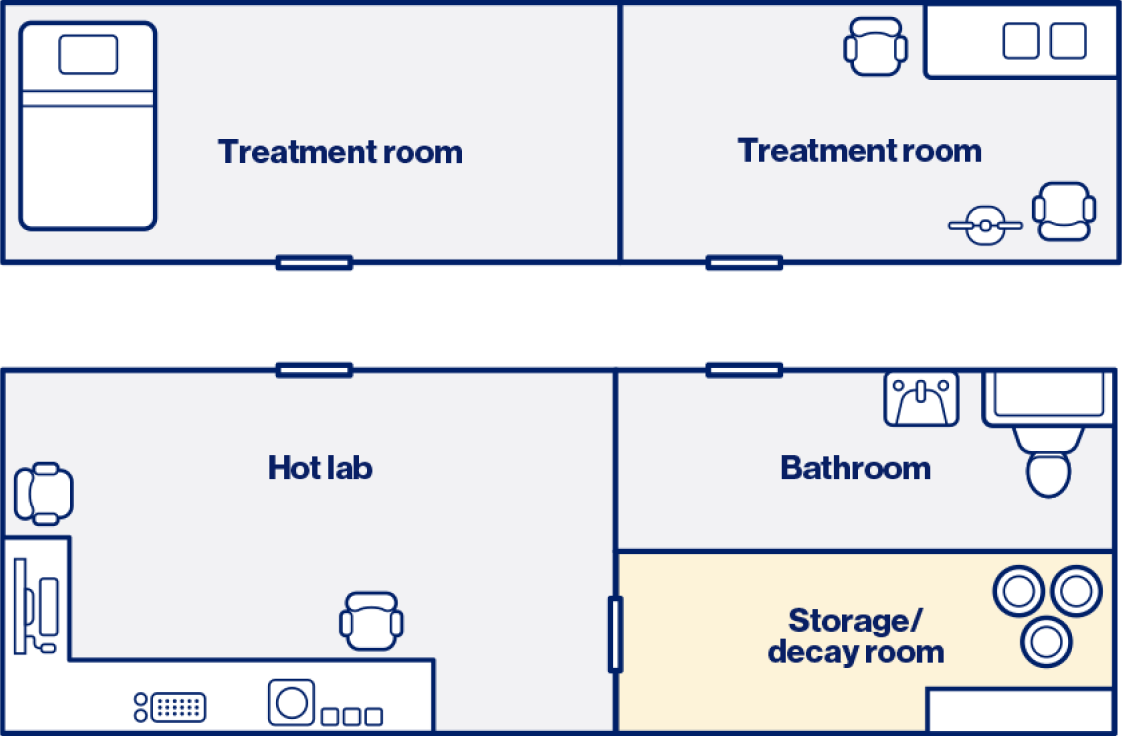
Facilities and equipment
This section of the Novartis RLT Institute reviews the considerations in setting up the facilities and equipment required to provide radioligand therapy (RLT).
Key spaces
Decay space

Diagram provided for illustrative purposes only; institutions should adhere to their internal guidance and are responsible for ensuring legal and regulatory compliance.
A decay space is a shielded, secured, locked space designated for holding radioactive waste until it has decayed to safe levels, which is organized with clear labeling and segregated by isotope and decay time. Access to the space should be limited and the area must be clearly marked with radiation signage.1,2
Key processes in this space
- Labeling and tracking radioactive materials during storage3
- Ensuring proper documentation and disposal procedures3

Facility flow
- Waste collection, separation, and storage4
- Decay-in-storage period4
- Monitoring and disposal4,5
Visit the waste management page of the Novartis RLT Institute for detailed considerations
Specific considerations
Shared spaces
The decay space should be large enough to account for the length of the decay period and number of patients, as a higher patient volume generates more waste.6 Depending on facility's design and available space, the decay space may be in the same room as the hot lab.7
